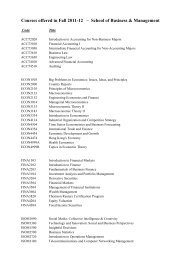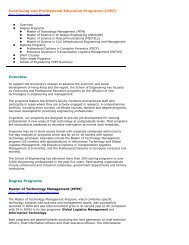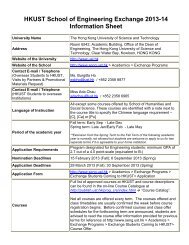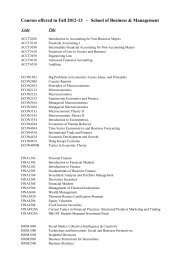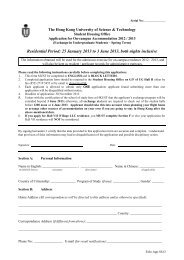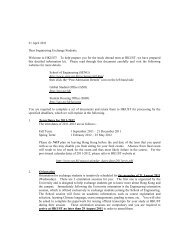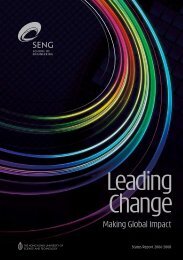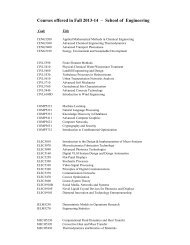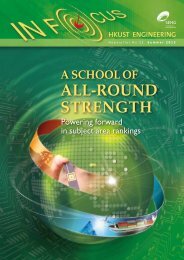pdf version - seng, hkust
pdf version - seng, hkust
pdf version - seng, hkust
You also want an ePaper? Increase the reach of your titles
YUMPU automatically turns print PDFs into web optimized ePapers that Google loves.
Empowering Excellence<br />
Networking and Computer Systems<br />
High Speed Switches and Routers<br />
• Architectures, analysis and design of high-performance switches<br />
and Internet routers, scheduling algorithms, traffic management,<br />
memory architectures, and quality of service guarantees.<br />
Wireless Technologies<br />
• Next-generation wireless networks and systems, cognitive and<br />
cooperative wireless networking, sensor networking, large-scale<br />
peer-to-peer systems, and multimedia communications.<br />
Distributed Systems<br />
• Large-scale content distribution in the Internet, peer-to-peer media<br />
streaming, the Internet topology, cloud computing, video delivery<br />
and multicasting, capacity provisioning and resource management<br />
in cellular networks, green computing and communications.<br />
Software Technologies<br />
Software Engineering<br />
• Software analysis and testing, software analytics, ubiquitous<br />
software development.<br />
Computer Music<br />
• Computer music and audio engineering.<br />
Software Theory and System<br />
• Cryptography and coding theory, mining software repository,<br />
multimedia and Internet computing, embedded systems and<br />
software, services computing.<br />
Research Highlights<br />
3D Digital City Modeling<br />
The vision and graphics group, led by Prof Long Quan, has worked on 3D reconstruction and<br />
modeling from images at the confluence of computer vision and computer graphics. The group<br />
has contributed the state of the art quasi-dense approach to three-dimensional reconstruction and<br />
structure from motion from images. The group then developed a series of modeling applications,<br />
ranging from smooth surface modeling to prior-based hair and tree modeling. Most recently,<br />
the group has been developing reconstruction and modeling approaches to large-scale threedimensional<br />
city modeling from two-dimensional Google Earth Street View and Microsoft Virtual<br />
Earth Streetside imagery.<br />
Landmark Photography<br />
Prof Pedro Sander worked with a team of researchers to develop the world’s largest digital<br />
photograph in September 2010. The photograph, depicting the city of Rio de Janeiro, Brazil, had a<br />
resolution of 150 billion pixels. The picture was the result of using cutting-edge technology to stitch<br />
together 11,000 photographs, each of 18 megapixels. Using very high quality printing, it would<br />
occupy the size of a football field, and with standard quality printing it would be at least twice that<br />
size.<br />
The researchers used a GigaPan robotic arm to position and take the photographs from the Sugar<br />
Loaf – a landmark in Rio de Janeiro, Brazil. The entire process took about four hours. The stitching<br />
process was challenging due to the large amount of data processing involved. Many stitching<br />
solutions were attempted to reduce the seam artifacts across images and the final process took<br />
several weeks. It took another full week just to upload the picture to the website over the Internet.<br />
46




